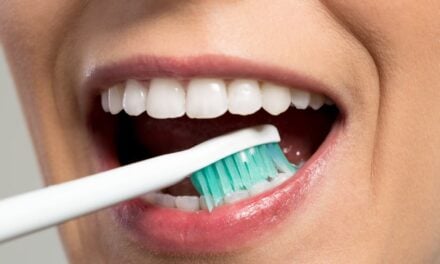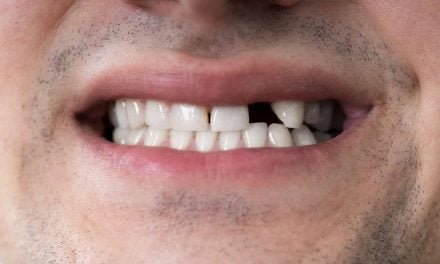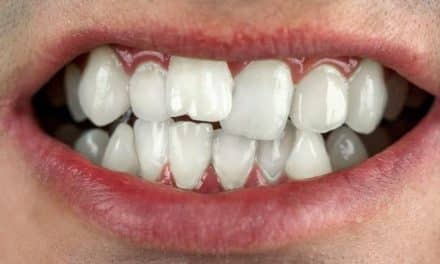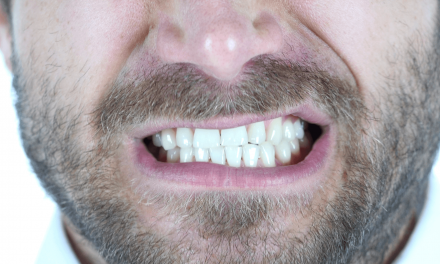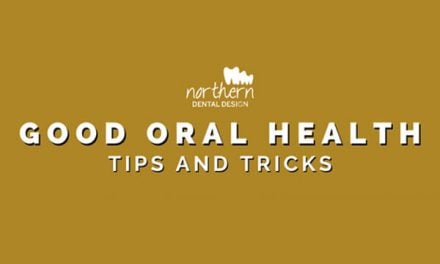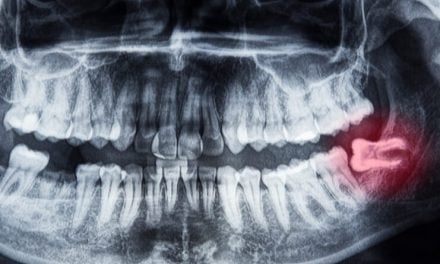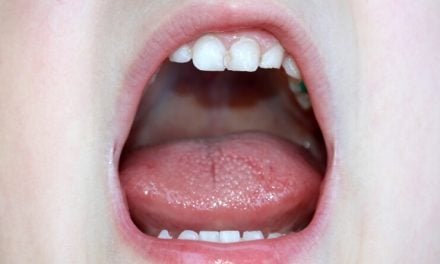The Jaw-Dropping, Teeth-On-Edge Impact Emotions Have on Oral Health

Losing teeth has a dramatic impact on the lives of some people. Statistically, 45% of loss or extraction patients experience difficulty accepting that one or more teeth are gone, and it seems confidence goes with them. Many are also unprepared for the inevitable jawbone disintegration and change in facial shape as a result of missing teeth.
Studies indicate that the effect of losing teeth has on self-esteem and certitude is not as short-lived as previously assumed. What it provides for dentists, is a proven perspective of the emotional relationship patients have to their teeth, which may sometimes express itself in a patient attributing long term denture discomfort to the plate itself rather than understanding the unresolved emotional difficulties they’re experiencing.
The very nature of the depth, breadth and complexities of human emotion is belied by the narrow approach we take regarding it.
Humans spend their lives responding and reacting to conditions in their external world. Nothing wrong with that – we all do it, with the people and places and things and information that are life and its circumstance. The end product is emotion – the chemical record of past experience.
We understand less about the workings of our emotional selves than we do about space exploration and physics. Undoubtedly, a recent and rather unsettling discovery in quantum physics is that the universe is not locally real.
‘Local’ means the context in which objects can be influenced only by their surroundings, and that influence cannot travel faster than light. ‘Real’ defines objects with definite properties independent of observation – an apple will be red even when no one is looking.
The new finding is that these things cannot both be true.
Evidence shows that objects are not influenced solely by their surroundings, and that they may also lack definite properties prior to measurement.
It’s a theorem with implications regarding the role that consciousness plays in quantum physics – even whether quantum theory must be superceded. The cherished assumptions of the reality we know have been overthrown. This may be nothing but information, but we certainly process it on an emotional level when it seems that what we thought we knew, we don’t and therefore never did.
If you’re wondering what quantum physics could possibly have to do with human emotion, it’s a field proving time and time again that everything is made of energy. The essence, the core, the basis of simply everything that exists in the entire universe, is energy.
All particles have chemical and physical properties, volume, mass and density. The weight and movement of energy is the vibrational waves of those particles. It’s why things like air and gravity, thoughts and emotions have energetic frequencies.

Emotion is our language. It’s in our language. In a humanistic model, to be “authentic” is to be at the top of that mountain, that self-actualised point where you’re living in congruence with who you are. Yet feelings and their resultant behaviours are largely categorised and viewed as the irrelevant and irreverent remnants of an evolutionary past, supposedly no longer so useful in everyday modern life.
Possibly there is a hovering question around how much fight-flight-or-freeze response we need to have when we’re not being stalked by large predators; and why it is we’ll assign that sensation to any number of things that aren’t even out to kill us.
Seemingly, it’s rationale and pharmaceuticals that slay these psychological dragons.
Curiously, it brings AI much closer to the mark with this lowering of the emotional barre – where the balance, strength and flexibility that make emotions useful requires no less arduous a training and duration of experience than a ballet dancer. Maybe we are all ballet dancers with varying degrees of fluidity and practice, whether through historic family environments, or a scale of innate emotional intelligence.
The mind and body are a cybernetic loop – what changes and affects one affects and changes the other. In such a complex, closed, system multiple feedback circuits form regulating networks.
It’s not because we’re a special species. Feeling signals are evident in the control mechanisms of even the simplest organisms.
The chemical machinery of the Escherichia coli (E. coli) bacterium has the same interactive feedback control loop between organism and environment as the structures of human emotional response. The same stimulus-response behaviour; the same evaluative memories.
This self-regulatory, binary logic chemistry cascades cell signalling throughout the entire body: in genetics, epigenetics and immunity. It’s a body-to-mind, mind-to-body flow of information which, along with emotional experiences subserves a bidirectional feedback circuit.
Just two generations ago, kids had more people to navigate face-to-face, more buses to catch, more train timetables to know. Two parents, numerous siblings, grandparents, aunts, uncles, neighbours and friends; places to walk to, ride to, or public transport to understand. More often than not they shared a bedroom, and the house had one bathroom between five or six people. There were more consistent and contextual external emotional checks and balances and they broadened internal perspectives. Kids spent more time with their peers without the distraction of technology and parents. The only screen was the tv (and there was only one) which was generally not on during the day. More walking and talking was done – in short, all very necessary tools for breaking the physical and psychological of circuitry of ‘stuck states’; usually somewhere on the colour wheel between angst and anxiety, or fear and fury.
It was a locally real universe.
When emotions are overridden and trivialised, what was once a balance bar becomes the calypso limbo that even the tallest must conquer, or the border between heaven and hell depending on religious beliefs.
Either way, it’s not comfortable.
No matter which way it’s cut, emotion governs logic. Sensations like fear, pleasure, and anger are processed in the brain by the amygdala. Signals are sent to the cerebral cortex, where conscious thought happens, then onto the thalamus for the autonomic nervous system to express whatever physical reactions there may be from heart rate to hand gestures.
It’s useful to point out that both science and religion are guilty of misrepresenting emotion. While science ignores emotion as the biological source of value, religion confounds its evolutionary rationality within the social constructs of moral superiority and evident sin. Naturally positive emotions such as wonder, curiosity, trust, honour, gratitude, compassion, faith, love and accomplishment are accredited to supernatural deities. Hierarchies, regulatory authorities, social mores and ideas and are routinely employed to instil fear, terror, shame, humiliation, and guilt to gain behavioural submission.
They’re tactics that doom us to failure.
In the history of pharmacology, not since the ready availability of antibiotics in the 1940s, was a new medication greeted with as much exultation as a green-and-white pill containing 20 milligrams of fluoxetine hydrochloride – Prozac. In her 1994 book Prozac Nation Elizabeth Wurtzel wrote of her almost transcendental experience of the drug.
Cooleridge’s Kubla Khan, Huxley’s The Doors of Perception, and pretty much anything ever written by Hunter S. Thompson to mention but a few, fall into that category, so she’s no Robinson Crusoe there.
For decades, one of the theories central to psychiatry is that antidepressants work by raising serotonin levels that had somehow lowered in the brains of depressed people. Prozac, Paxil and Zoloft are regarded as the amplifiers and signal strengtheners of the serotonin neurotransmitters between neurons, that controls mood and is held responsible for feelings of happiness.
It’s a theory that’s now widely criticised.
In short, pharmaceuticals don’t offer realistic interventions or particularly optimistic options for maintaining and balancing emotional health. It appears we should look to quantum physics in the exploration and cultivation of positive experience coding and an entire understanding of the dimension of human emotion.
At any one time an estimated 20% of the world population is experiencing mental illness. Interestingly, the statistic is the same for tooth decay, with bruxism sufferers at 30%. It’s clear that the emotional guidance system we have, has been hijacked, weaponised, drugged and taken hostage in the name of social manipulation.
Mostly it brings cycles and levels of suffering, unhappiness, conflict, competition and needless destruction – both internal and out. Which is interesting because for so long the inherent nature of humans was believed to be magnificence, compassion and the seeker of the greater truth.
The bridge between human nature and neuroscience – neurophilosophy – explores and defines the neurophilosophical account of human nature. It claims three fundamentals: emotionality, amorality and egoism. Along with that, are five crucial factors driving human nature – power, pleasure, profit, pride and permanency. Unless permanency (i.e. species survival) has something altruistic in there, we’re looking pretty piss-poor with those ‘ps’.
As a five-point guidance system it doesn’t come across as star-rating.
According to quantum physics, we have to create the curvature of justice, integrity, freedom and empowerment to by thoughts of that. Waves of emotional currency focussing on that – rather than being emotionally overwhelmed by the relentless awareness of the punished and punishing planet and its people, in this present time.
Which is of course the past and the future as well.
It’s been long known that the chemical result of the emotion of stress is heavily involved in health trajectories and outcomes. So it’s no surprise that a person’s physical, psychological and emotional quality of life is directly affected by their level of oral health.
And yet the separation of mental, dental and medical persists worldwide, except for Denmark, Germany, Finland and Sweden where they seem to get education right too.

Many alternative therapies attribute particular emotions to specific teeth and their related organs. The upper right first pre-molar, for instance, represents the emotions of compulsion, control, criticism, and sadness; connected to the lungs and large intestine. The relevant chakras for that tooth are the solar plexus, heart and throat.
For a whole lot of people, that will suddenly make sense.
As the organ of expressive capacity both socially and sexually, the oral cavity holds high value in living a fulfilling emotional life. Many people feel embarrassed to speak or kiss because of the state of their mouth. And nobody feels comfortable being seen without their dentures.
TMJ disorders reveal similar results in terms of emotional dissonance. Dentists are seeing a rise in mostly stress-related cracked and broken teeth, bruxism, and anti-depressant induced bruxism indicative of the peaceful lives we’re not finding; focussing on loss, a present stuck in the past and a gaping reminder of the critical sadness of a compulsive control freak.
It may be that the development and maintenance of an intact mouth is the development and maintenance of moral conscience. That a life not left un-lived only comes with good oral health – which in turn, is developed and maintained by the emotional landscape mapped by quantum physics.
Makes that twice-yearly trip to the dentist more than worth it. Your happiness depends on it.
DISCLAIMER:
The content has been made available for informational and educational purposes only. Northern Dental Design does not make any representation or warranties with respect to the accuracy, applicability, fitness, or completeness of the content.
The content is not intended to be a substitute for professional personal diagnosis or treatment. Always seek the advice of your dentist or another qualified health provider with any questions you may have regarding a dental or medical condition. Never disregard professional advice or delay seeking it because of something you have read or seen on the Site.

